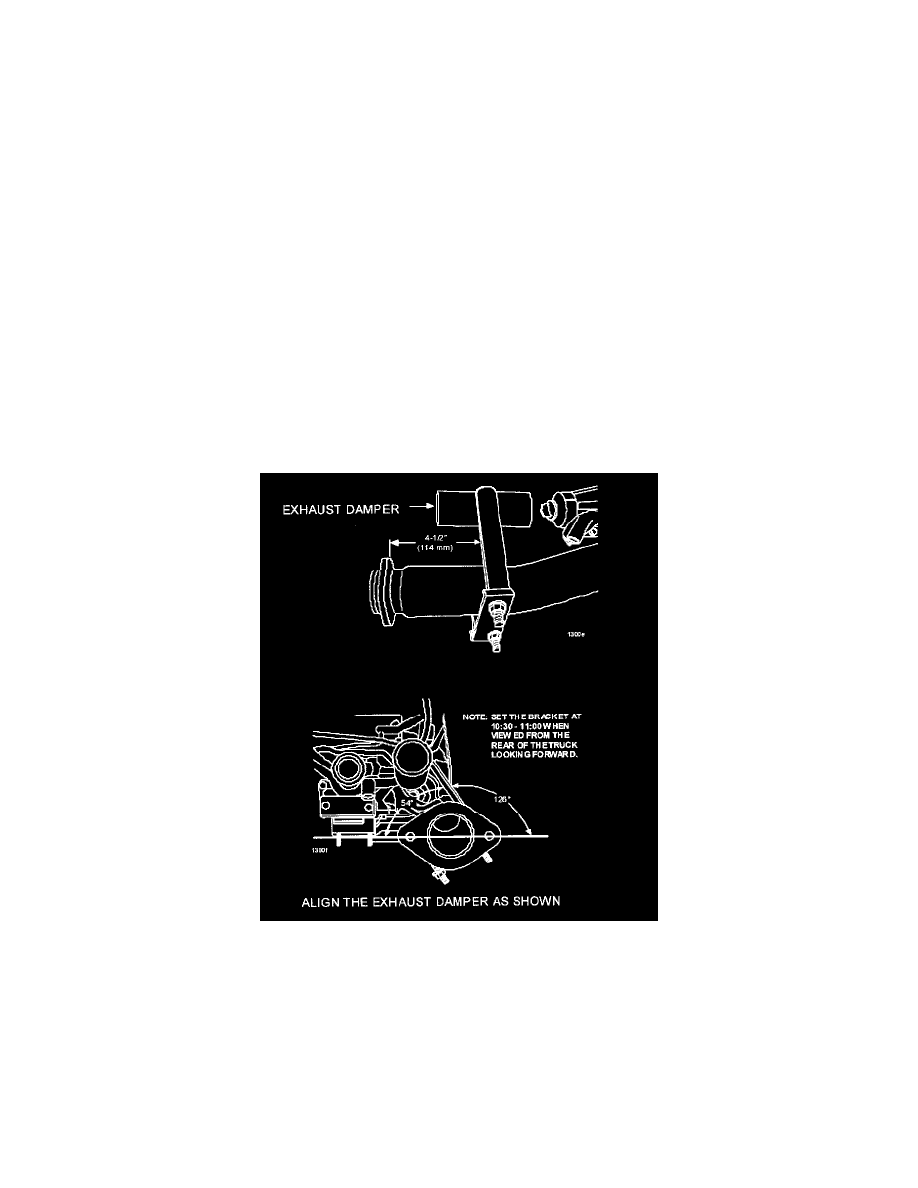B2300 L4-2.3L VIN D (2004)

e.
Place the transmission in Reverse.
f.
Slightly raise engine RPM to torque Powertrain.
g.
Repeat this process again.
h.
Place transmission in Park and turn off engine.
5.
Torque the powertrain and exhaust system attachments to specification in the following sequence:
a.
Left engine insulator nuts - Tightening Torque: 102 N.m (75 lb-ft).
b.
Right engine insulator nuts - Tightening Torque: 102 N.m (75 lb-ft).
c.
Transmission extension housing-to-cross member mount nuts - Tightening Torque: 99 N.m (73 lb-ft).
d.
Exhaust manifold-to-catalytic converter pipe nuts (support the catalytic converter and pipe in a neutral position while tightening) -
Tightening Torque: 40 N.m (30 lb-ft).
e.
Catalytic converter pipe-to-muffler and exhaust pipe nuts (do not support the exhaust system while tightening) - Tightening Torque: 40 N.m
(30 lb-ft).
6.
Check the Powertrain and exhaust to ensure there are no points grounded out to the body. Inspect for other possible ground-outs to the dash-panel,
like wire harness, hoses, etc.
NOTE:
Only automatic transmission models have an exhaust damper installed. Positioning of this damper is important and is explained in STEP 7.
7.
Check for the proper installation of the exhaust damper in front of the catalytic converter to muffler and exhaust pipe connection. The damper
should be located 114 mm (4.5") forward of the catalytic converter flange and at an angle of 54 degrees from horizontal. Torque the exhaust
damper attaching nuts - Tightening Torque: 47.5 N.m (35 lb-ft).
8.
Start the engine and check for exhaust system leaks.
9.
Verify repair.
NEUTRALIZING POWERTRAIN & EXHAUST SYSTEM - MANUAL TRANSMISSION MODELS
